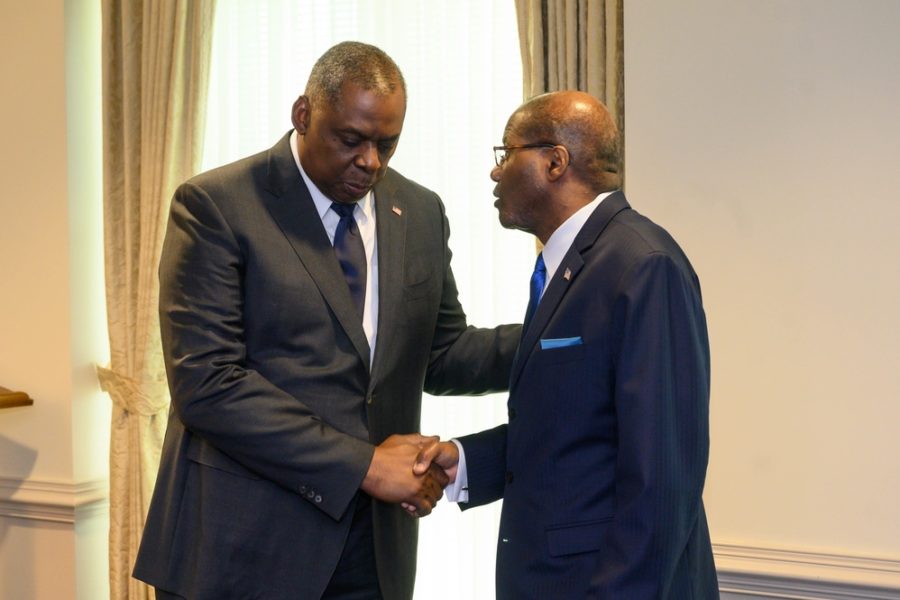The Defense Department is establishing a new office to coordinate its approach to unidentified aerial phenomena, signaling the Pentagon’s increasing interest in the issue as it becomes less and less of a fringe concern.
The Airborne Object Identification and Management Synchronization Group was announced by Deputy Secretary of Defense Kathleen H. Hicks in a Nov. 23 memo and will be organized underneath the Office of the Under Secretary of Defense for Intelligence and Security, Ronald Moultrie.
The AOIMSG’s purpose will be to “synchronize efforts across the department and with other federal departments and agencies to detect, identify, and attribute objects of interests” in Special Use Airspace such as DOD training ranges and installations, the memo states.
The group will serve as the successor to the Navy’s Unidentified Aerial Phenomena Task Force, which is in the process of transitioning to the AOIMSG, a Defense Department spokeswoman told Air Force Magazine.
The formation of the new office comes almost exactly five months after the Office of the Director of National Intelligence released a highly anticipated report on UAP that was mandated by Congress. The report focused on 144 incidents of UAP identified by military pilots dating back to 2004 and was unable to provide explanations for all but one of them.
The majority of those incidents were reported by Navy aviators, and the report noted that the Air Force’s “data collection has been limited historically.” That was just one of the challenges the report identified in analyzing and reaching conclusions on UAP incidents.
The AOIMSG is aimed at addressing those challenges and potential solutions identified in the report, the spokeswoman said. As part of coordinating how departments detect, identify, and attribute UAP, the new group will standardize the reporting process across the Pentagon, the memo states. It will also collect and analyze operational and intelligence data and recommend policy and regulatory changes as necessary.
The group will be overseen by the Airborne Object Identification and Management Executive Council, which will be co-chaired by the undersecretary for intelligence and security and the director of operations for the Joint Staff. The The executive council will appoint an acting director for the group and submit implementation guidance—announcements regarding “organizational membership, roles, responsibilities, and authorities” will come in the weeks ahead, the spokeswoman said.
The new office would seem to fill some of the roles envisioned in an amendment offered to the 2022 National Defense Authorization Act by Sen. Kirsten Gillibrand (D-N.Y.). Gillibrand’s legislation calls for the establishment of a “Anomaly Surveillance and Resolution Office” in the Pentagon that would take on the duties of the Unidentified Aerial Phenomena Task Force, “synchronize and standardize the collection, reporting, and analysis” of UAP events, and evaluate their threat to national security.
Under Gillibrand’s amendment, the office would also be responsible for ensuring UAP incidents are reported to a “centralized repository,” as well as crafting a “science plan” to develop and test theories “to account for characteristics and performance of unidentified aerial phenomena that exceed the known state of the art in science or technology.” The amendment also calls for twice-yearly briefings to Congress panels.
Gillibrand is also proposing the formation of an “Aerial and Transmedium Phenomena Advisory Committee,” with appointed experts from NASA, the Federal Aviation Administration, the National Academies of Sciences, the head of the Galileo Project at Harvard University, the director of the Optical Technology Center at Montana State University, the Scientific Coalition for UAP Studies, and the American Institute of Astronautics and Aeronautics.
The proposal has bipartisan backing, POLITICO reported, as lawmakers on both sides of the aisle have cited the issue’s potential national security implications as reason to take it more seriously. While much of the public fascination on the subject has focused on the idea of extraterrestrial origins for the UAP, some analysts and lawmakers have raised the possibility of foreign powers using new technologies.
Gillibrand’s office has not responded to a request for comment from Air Force Magazine on the newly announced AOIMSG and how it relates to her amendment. One of the co-sponsors to Gillibrand’s amendment, Sen. Marco Rubio (R-Fla.), issued a statement to Air Force Magazine.
“Sen. Rubio welcomes greater attention by the Defense Department on the issue of Unidentified Aerial Phenomenon,” the statement reads. “It is important that the DOD and Intelligence Community work together to gather more data on UAPs, particularly those operating in and around military airspace as they may pose a threat to flight safety for military aviators and some have exhibited potentially advanced aviation characteristics or may be foreign intelligence collection platforms.”
Gillibrand isn’t the only lawmaker proposing a permanent office within the Pentagon to study UAP. Rep. Ruben Gallego (D-Ariz) included an amendment to the House’s version of the 2022 NDAA that would establish such an office and require an annual report to Congress.

